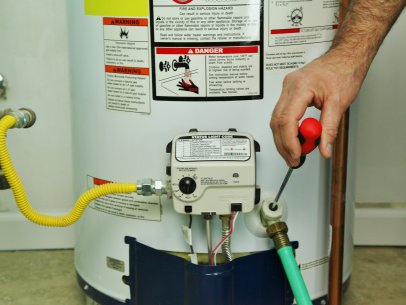What to Maintain Your Home's Hot Water System Effectively
What to Maintain Your Home's Hot Water System Effectively
Blog Article
What are your insights and beliefs about How to Maintain a Hot Water Heater in a Few Simple Steps?

Warm water is necessary for daily convenience, whether it's for a refreshing shower or cleaning dishes. To guarantee your hot water system runs effectively and lasts much longer, regular maintenance is vital. This article supplies practical ideas and understandings on how to keep your home's hot water system to prevent disturbances and costly fixings.
Intro
Maintaining your home's warm water system might seem overwhelming, but with a few straightforward steps, you can ensure it runs smoothly for many years ahead. This guide covers whatever from recognizing your hot water system to DIY upkeep tips and knowing when to hire expert aid.
Importance of Keeping Your Hot Water System
Routine upkeep not just extends the life expectancy of your warm water system yet also ensures it runs successfully. Neglecting maintenance can cause lowered efficiency, higher energy costs, and also early failure of the system.
Indications Your Hot Water System Requirements Upkeep
Recognizing when your hot water system needs focus can prevent major problems. Watch out for indicators such as irregular water temperature level, strange noises from the heater, or rusty water.
Comprehending Your Hot Water System
Prior to diving right into upkeep jobs, it's handy to recognize the basic components of your hot water system. Generally, this includes the water heater itself, pipes, anode rods, and temperature controls.
Monthly Maintenance Tasks
Normal month-to-month checks can aid capture small concerns prior to they rise.
Purging the Hot Water Heater
Purging your hot water heater eliminates sediment accumulation, enhancing effectiveness and extending its life.
Checking and Replacing Anode Rods
Anode rods prevent corrosion inside the tank. Evaluating and changing them when broken is vital.
Evaluating and Changing Temperature Level Settings
Adjusting the temperature setups makes certain optimum efficiency and security.
DIY Tips for Maintenance
You can carry out numerous maintenance tasks yourself to keep your warm water system in leading condition.
Looking for Leakages
Regularly inspect pipes and connections for leaks, as these can lead to water damages and greater expenses.
Examining Pressure Alleviation Valves
Checking the pressure relief valve guarantees it operates correctly and avoids excessive stress build-up.
Protecting Pipes
Shielding warm water pipes lowers warm loss and can save power.
When to Call a Specialist
While DIY maintenance is beneficial, some concerns need professional experience.
Complicated Concerns Needing Professional Aid
Examples consist of major leakages, electrical troubles, or if your hot water heater is consistently underperforming.
Regular Professional Upkeep Advantages
Specialist maintenance can consist of extensive inspections, tune-ups, and ensuring conformity with safety criteria.
Final thought
Normal maintenance of your home's warm water system is vital for performance, durability, and price savings. By adhering to these suggestions and recognizing when to seek expert help, you can make sure a trusted supply of hot water without unexpected disruptions.
How to Maintain an Instant Hot Water Heater
Before tinkering with your hot water heater, make sure that it’s not powered on. You also have to turn off the main circuit breaker and shut off the main gas line to prevent accidents. Also turn off the water valves connected to your unit to prevent water from flowing into and out of the appliance. 2. When you’re done, you have to detach the purge valves’ caps. These look like the letter “T†and are situated on either side of the water valves. Doing so will release any pressure that has accumulated inside the valves while at the same time avoid hot water from shooting out and burning your skin. 3. When the purge valves’ caps are removed, you have to connect your hosing lines to the valves. Your unit should have come with three hoses but if it didn’t, you can purchase these things from any hardware or home repair shops. You can also get them from retail stores that sell water heating systems. Read the user’s manual and follow it to complete this task properly. When the hosing lines are connected, open the purge port’s valves. 4. You should never use harsh chemical cleaners or solutions when cleaning your unit. Make use of white vinegar instead. It should be undiluted and you’ll probably use about 2 gallons. 5. Now flush your water heater. This task should probably take about 40 minutes. We can’t give you specific directions for this because the procedure is carried out depending on the type, model and brand of your heater. With that being said, refer to the user’s manual. 6. When you’re done draining the unit, you have to turn off the purge port valves again. Remove the hosing lines that you earlier installed on each of the water valves. Put the valve caps (purge port) back in their respective places and be very careful so as not to damage the rubber discs that are found inside these caps. 7. Now that everything’s back in place, check your user’s manual again to find out how to reactivate your water heating system. 8. Once it is working, turn one of your hot water faucets on just to let air pass through the heater’s water supply pipes. Leave the tap on until water flows smoothly out of it. https://www.orrplumbing.com/blog/2014/september/how-to-maintain-an-instant-hot-water-heater/

As an avid person who reads on Tips on Maintaining a Water Heater, I was thinking sharing that excerpt was really helpful. Those who enjoyed our blog posting plz remember to share it. We treasure your readership.
Click Here Report this page